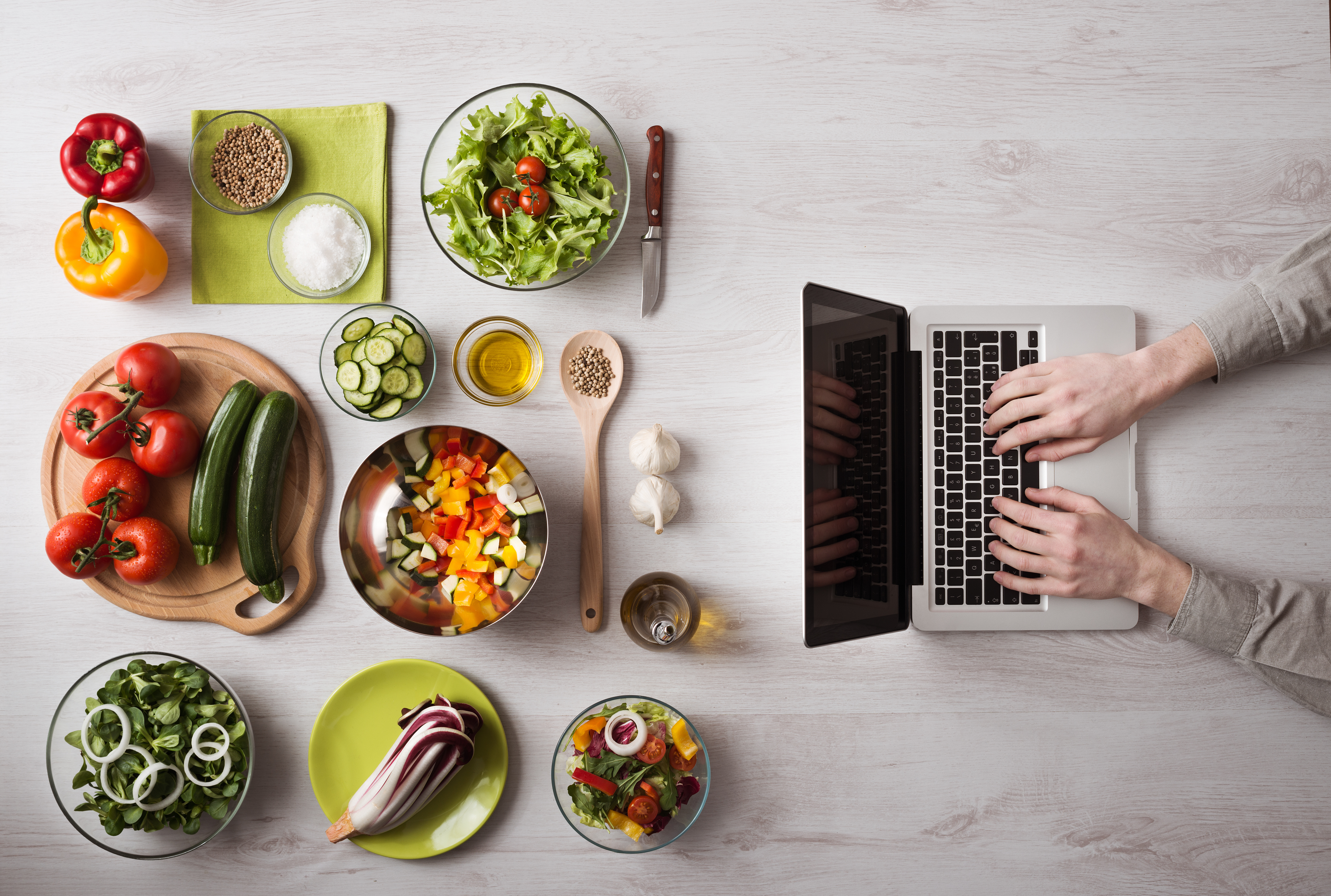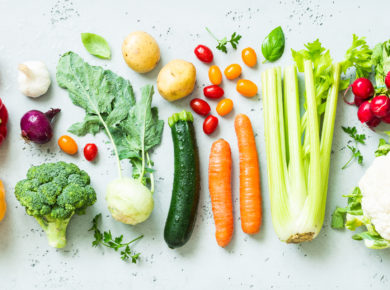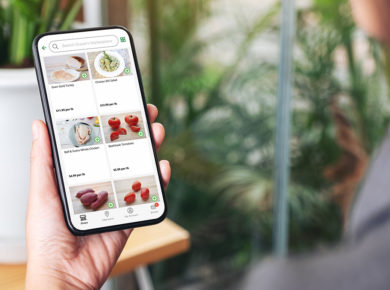Instacart. Shipt. Blue Apron. HelloFresh. ClickList. From grocery delivery to meal kits to curbside pickup, it’s easy to see that e-Commerce has infiltrated the once insulated brick and mortar world of grocery shopping. Amazon buying Whole Foods, Walmart buying Jet.com and then partnering with Google Express, CostCo teaming up with Instacart and Target and Meijer partnering with Shipt, daily it seems the headlines reflect further progression towards this shift in availability, driven by consumer demand for the convenience they’ve already become accustomed to across a wide variety of purchasing categories.
For independent, local and neighborhood grocers, the effect is already being felt, and will continue to do so if this online movement is ignored rather than embraced. Customers increasingly expect online capabilities from local, fresh-food merchants. The reality of customer experience and what shoppers can expect has changed. Even the competition from the restaurant space has evolved to home delivery with options such as GrubHub, UberEats and DoorDash.
The best approach for these small or independent food businesses is to understand this consumer evolution, their shopper’s expectations to meet their customer’s needs to ensure continued success. To do so, let’s first look at today’s landscape and how we got here.
The Fast Growth of Online Grocery Shopping
According to a 2017 Nielsen study, 20 percent of all groceries will be bought online by 2025. Businesses who do not offer online ordering/delivery capabilities are at risk of being left behind and ignored. You can get ahead of this curve and start bringing in profits by implementing the right systems and technology – an important strategy that is easier, simpler and more cost effective than you might think (more on that below).
In 2015, total U.S. online grocery sales were roughly $7 billion, with 23 percent of U.S. households purchasing groceries online. In 2018, online grocery sales reached nearly $18 billion in sales. For comparison, offline grocery sales rose by 3.1% annually from 2015 to 2018, and online sales grew over 21% in that period.
According to Kelli Hollinger, director of Texas A&M’s Center of Retailing Studies, “Grocery is one of the last retail categories to really experience a dramatic revolution in the online space,” noting that “as more and more consumers have positive experiences with meal subscription services or trying out click-and-collect, that’s going to rapidly change consumer behavior.”
Consumers Have Changed
While groceries still lag behind home goods and apparel in online sales, grocery is one of the fastest-growing e-commerce segments. And the demographics are wide ranging. Everyone from working professionals to busy families are taking advantage of grocery delivery and experimenting with dinner kits from meal-subscription companies. And as the primary shopper in a household changes with age, Millennials who are starting to become heads of household are willing to spend money for these time savers, with 25% of millennials willing to pay a premium for same-day delivery.
These changes have affected other categories – technological advances in transportation such as Uber and Lyft mean that we rarely step out into the street to hail a cab anymore and many readers find their next book based on suggestions from a service like Kindle or Audible rather than roaming the aisles of the library or bookstore. The same goes for music, movies and many other services available for streaming, in an instant, on demand world. Therefore the likelihood that consumers will continue the shift towards repeat ordering their groceries via an online platform or cell phone app vs strolling the aisles pushing a shopping cart is quite high and already happening at a rapid rate.
Grocery Giants Online
Big box corporations have taken note, both in the direct grocery space (e.g. Kroger and its subsidiary brands) as well as formerly non-grocery retailers such as Walmart and Amazon. For Kroger, the introduction in 2015 of its ClickList program has been a great success. George Anderson, e-commerce manager of the Kroger Mid-Atlantic division, said the program was “a direct response to customers’ desires.” They’ve asked for their groceries to be made more readily available, more convenient and in less time. If they don’t find it with us, they’re going to find it with somebody who provides what they want.”
What’s more, John Lambert, a Kroger spokesman, said another reason the company has invested in the ClickList program is for new customer growth, noting that “50 percent of the business we’re receiving from ClickList is coming from elsewhere. So we’re here to meet the customers’ needs, but we’re also here to bring people to Kroger.” Meaning shoppers who usually get their groceries elsewhere, are attracted to Kroger because of their online order fulfillment capabilities. You could be losing customers to large chains simply by not offering online shopping.
A spokesman for Walmart, Ravi Jariwala, reflected on its online delivery service saying that, “the great thing about e-commerce is that it provides convenience, choice and access to customers who want shopping to be faster, easier and more convenient.”
While online grocery ordering has been popular for years in the UK, it was slower to take off in the U.S. Bill Bishop, chief architect of Brick Meets Click, a consulting and retail advisory company, noted that it wasn’t until 2015 that the idea of e-commerce affecting the grocery sector became top of mind as “certain companies discovered that they were losing parts of their business to online retailers like Amazon.” Bishop continued, “then in certain big markets, there was a growth of retailers who were allowing customers to do most of their grocery shopping online. That’s when things like Amazon Fresh and Fresh Direct started rolling out. Other supermarkets and grocers now realized that these were direct competitors.”
How Does Amazon Conquer a Market?
As evidenced in various market sectors, Amazon typically operates by first adding a marketplace to their site (for example, by aggregating a range of jewelry vendors). They learn everything about that market. Once they learn about its operations and mechanics, Amazon directly starts selling that product, purchases the vendors themselves and thereby eliminates competition.
Because of their direct relationship with customers in other areas, they’re able to essentially monopolize a market. They have so much consumer data that they have great insight into which customers to target for a range of seemingly unrelated products. But even Amazon has struggled with grocery, pulling back AmazonFresh operations in some markets after their acquisition of Whole Foods and subsequent competition with InstaCart (which had a five year deal with Whole Foods at the time of acquisition).
They’ve also begun experimenting with opening physical locations to sell fresh produce, hinting at the issue of needing a physical location to house and source products that need to be kept fresh. But even with the setbacks that are common in ironing out the logistics of online grocery and delivery, they aren’t slowing down, with projections indicating they’re poised to hit upwards of $23 billion in category sales by 2021.
Tips for Competing with Online Grocery Giants
So how can independent small grocers create a competitive advantage while embracing the consumer trend towards online grocery? First, it’s key to realize that while only 15% of U.S. adults have purchased general food items online, 25% have bought specialty food and beverages online, especially items which are hard to find elsewhere. As local and neighborhood shops typically cater to the dietary and cultural preferences of those that live around them, this is especially important for both packaged products as well as fresh food offerings. Having an understanding of your customer base and building upon the established relationships you have with your shoppers allows you to deepen your level of service and potentially even offer extra personalization.
Mercato Helps Independent and Niche Food Merchants Compete
While you may not have the market power employed by a behemoth like Amazon, you know your customers intimately and, with the right vendor partnership, can leverage data to customize promotions and specials based on both numerical and personal information. This is the case when partnering with Mercato, which allows independent grocers to take their brick and mortar store online, providing a platform that is customizable whether you offer 50 or 50,000 products.
Innovating to incorporate technology into your business allows you to further enhance the competitive edge that comes a deeper, personal customer connection, and keeps you at the forefront of trends like deliverability. WIth Mercato, you can manage your own delivery process or, in select cities, outsource it to the Mercato delivery network (they handle deliveries and fulfillment for you). By using Mercato’s platform, you can effectively expand your business without adding overhead and expand your customer reach without having to open multiple storefronts.
Efficiencies can also be gained in leveraging digital communications. Bishop (Brick Meets Click consulting) notes that many retailers are now focusing more on their digital communications, saying that, “the other thing we’re seeing is companies working harder to establish digital communications with their customers. We’re seeing digital coupons, circulars being digitized and being sent via email and website enhancements as a direct result of e-commerce. It’s motivating companies to offer online shopping and engage with their customers more effectively.”
According to Forbes, as consumers become more attuned to where they spend their dollars, many are turning to “small format retailers both in-person and online that set themselves apart from their competitors by focusing on things like providing exemplary customer service, unique products and being socially conscious.”
While it often seems like today’s consumer just wants a one stop shop like Amazon vs previous generations who made multiple stops to a produce stand, bread bakery and even had a milkman for dairy delivery, the Food Marketing Institute found that this hasn’t changed entirely. In fact, “the average consumer visits five to seven retail channels regularly to buy groceries.”
Online subscription-based services, which often offer additional discounts for the ongoing business play a part in this as, for example, a shopper may exclude pharmacy items such as vitamins or bulky paper products from their physical shopping trip and have them shipped directly to their home on a set cadence via an online seller.
Not only are these items at a lower cost but the consumer doesn’t have to remember to purchase them (and in some cases can even be given reminders if leveraging smart home technology, often brought to you by two companies with vested interest in meeting these needs, Google and Amazon).
By joining a marketplace like Mercato’s – you allow your customers to easily find and purchase the nice and specialty items from your store while they are shopping for items that you do not necessarily stock or specialize in. For example, the customer can buy fresh fish, craft cheese and their regular groceries from three separate stores in one site visit. Mercato provides tools and support for boosting online marketing and customer communications – also allowing features like free customer review responses (which platforms like Yelp do not allow).
Advantages of Combining Physical and Online Storefronts
Bishop makes the argument that brick and mortar retailers still have a leg up as those that offer groceries in both traditional and online formats enjoy higher average sales per order. Bishop’s consultancy firm did a study in which it looked at online orders from 19 multichannel grocery stores over the course of one week. The study found that more than half of the stores recorded average online orders ranging from $120 to $180 while average sales at online only grocery stores such as Fresh Direct totaled $105 and AmazonFresh’s average sale totaled nearly half, at $84. According to Sam Gluck, owner of Breadberry, a grocer who participated in the study, over time they’ve also found that “the number of customers shopping online increases each month, and the average basket size increases as well.”
Mercato Gets Stores Online – Fast
Many independent grocery retailers find this progression intimidating as they’re experts within their niche, but not well versed in the technology forward, on-demand and mobile sides of the business. Even if you have an IT team (which many don’t), building something in house is a challenge, especially at the scale of the competition, and with the head start and difficult learnings they likely already have.
Looking to third party solutions makes the most sense in this case, and aligning oneself with a neutral provider who is not looking to simply learn and then overtake, is the local grocer and craft food purveyor’s best bet. Mercato was designed by an independent grocer from Brooklyn, NY who knows first hand the intricacies of the category and the hurdles of online ordering and delivery. Mercato’s offering can help you compete by handling setup to assist in getting your store online, offering order fulfillment, providing features and support specific to your business and building your overall online presence while still allowing individual interaction with your customers, such as in the handling of reviews, etc.
As they’ve done in many other categories, Amazon will continue to make progress in grocery, and small businesses must be fully aware of the growing threat from them, as well as other competitors, traditional and nontraditional. As these new technology forward companies approach the grocery market in a way that challenges the status quo, embracing a new mindset is crucial. We know that our consumers lives are getting busier, they want ease and convenience and they’re not only willing but actively seeking out avenues to give their business to companies that help simplify their shopping experience. They have come to expect the brick and mortar businesses that they wish to frequent to have integrated the technology they’ve adopted into other facets of their daily lives.
Talk to Mercato
Making consumers lives easier may involve evolution from the practices independent grocers and specialty food artisans have employed in the past, but it will position them for success in the future. The trick is in finding the right partner that can simplify the process, help guide you through the right approach and build a foundation upon which your operations can grow in the face of this as well as future shifts in the way we shop.
With a mission to help local businesses compete and win, Mercato brings a fresh perspective to the category, serving as a true extension of your team vs another intimidating vendor. Unlike other platforms, Mercato does not require you to compromise your branding and offering, instead helping you to translate the essence of your physical shop to the online space in a way current customers will find familiar and new customers appealing. Some of the country’s best independent grocers, from Chelsea Market to Rafetto’s, Green Grocer to Hyde Park Produce, Cowgirl Creamery and the San Francisco Fish Company, have experienced the ease of setup, dedicated customer service and, ultimately, increases in month over month sales.







